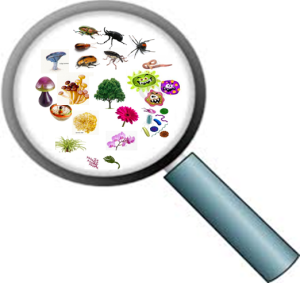Co-extinction may be the most common form of extinction there is. From the Tasmanian tiger to the gastric-brooding frog, it’s no secret that lots of Australia’s animals have gone extinct. But many tiny microorganisms were dependent on these large animals. What happened to these microbes after the loss of their bigger buddies, and, if we can bring the animals back, will their microbes return too? Continue reading
Category Archives: Environmental DNA
DNA traces in soil link a suspect to a crime scene
During my PhD at the Australian Centre for Ancient DNA (ACAD) I developed a new soil DNA technique for use in real-life forensic casework. The study, now published in Forensic Science International, has shown that DNA identification of the fungi, plants, and bugs in small samples of soil can link a person to a particular location.
The project, co-funded by the Australian Research Council and the Australian Federal Police, created a mock crime scene to mimic the disappearance and recovery of a woman’s remains. A shovel was used to dig a shallow grave before being placed into a car boot alongside shoes worn at the time.
Six weeks later, the DNA of the fungus, plants, and bugs living in the soil stuck to the shoes and shovel was recovered, and compared to DNA detected in soils from multiple other locations across South Australia. The unique signature of fungus, plants, and bugs placed the soil samples recovered from the shoes and shovel just meters from the crime scene. This study is one of the first to demonstrate that new genomic methods can be used in real-life applications to track criminals weeks later and accurately place them at crime scenes. Our murderer has a lot more explaining to do! Continue reading
What bug was that?
By Laurence Clarke
Insects are the most diverse group of animals on the planet, playing important roles as disease carriers, pollinators, and agricultural pests. So, when we want to know what insects are spreading disease, why certain plants are growing (or why they aren’t), or even for  conservation, it’s important that we can identify insect species accurately. I’ve recently developed new tools to identify insects using their DNA. Continue reading
conservation, it’s important that we can identify insect species accurately. I’ve recently developed new tools to identify insects using their DNA. Continue reading
The wonders of Kangaroo and Wallaby poo
Jess Wadley features on this week’s Scope explaining how and why she studies Kangaroo and Wallaby poo.
Jump to 19:40 for Jess’s appearance as she meets the Kangaroos, collects poo, and heads into the ACAD labs. The show also covers no-snow skiing, theme park rides, and the world’s most sensitive thermometer.
Click here to watch the show on tenplay.

Credit: tenplay
Counting wombats without ever sighting one
By Lauren White

The northern hairy-nosed wombat. Credit: EHP
The northern hairy-nosed wombat (Lasiorhinus krefftii) is a very elusive creature. They are only found at one site in Australia: Epping Forest National Park in North Queensland. Highly endangered, wombat numbers were as low as 40 individuals in the 1980’s. They are very difficult to sight because of their nocturnal nature and largely subterranean lifestyle. They live underground in extensive burrows with multiple entrances, only emerging for a few hours each night. Sighting enough to get an accurate population count, which is important for the management of this iconic species, is almost impossible. Continue reading
Environmental DNA: working out where things live by the DNA they leave behind.
All organisms leave traces of their DNA behind in the environment, for example, in hair, skin, faeces, eggs, larvae etc. By extracting and sequencing DNA from environmental samples such as soil or river water, we can identify the species that have contributed DNA to that sample, in the same way that a forensics expert can determine who was present at a crime scene. Environmental DNA (eDNA) methods were first applied to microbial communities such as bacteria and fungi. In the last few years, the breadth of eDNA studies has expanded to include plants, invertebrate and vertebrates. In one (slightly gruesome) study, researchers were able to detect DNA from over 20 different mammal species Continue reading

